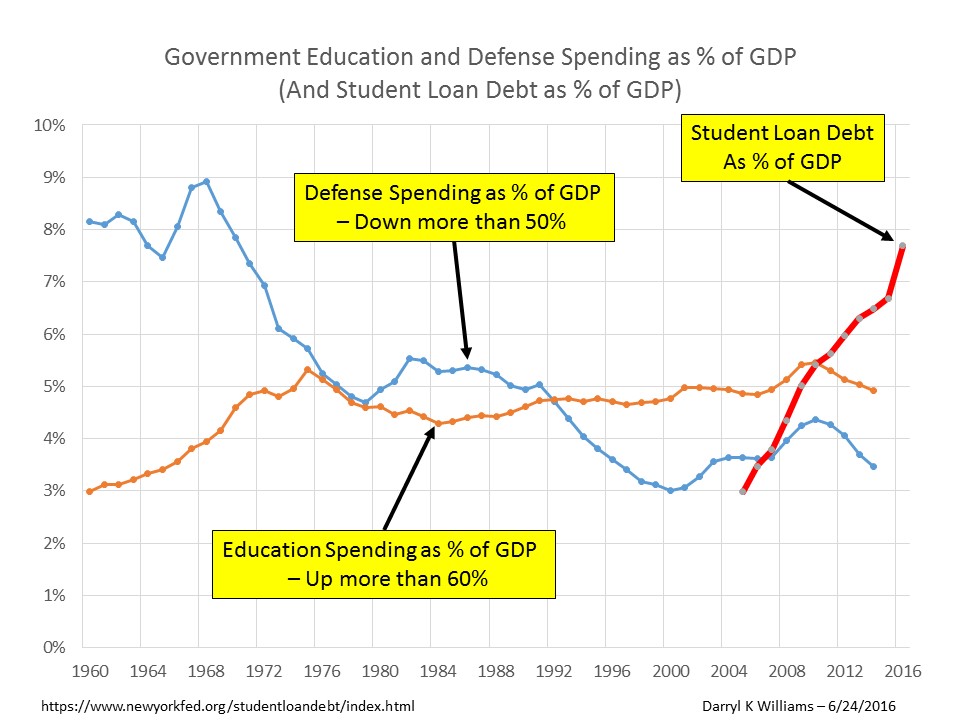Facebook is an excellent tool for, among other things, propagation of preposterous propositions. Just a few days ago I saw one of those little memes posted asking why there is always money for war but not for education. I had been laboring under the impression that both were being adequately and probably excessively funded so looked up some data at the Bureau of Economic Affairs National Income and Product Accounts (BEA NIPA) data website. Here are the data (Chart updated as of 6/24/2016) on National Defense and Education spending by US Federal, State, and Local governments as a percent of GDP over the past 45 years.

PS: I know it is a little flaky to plot a debt on the same chart as spending, but here it is anyway.
National Defense spending was cut from around 8% of GDP in the late 1960’s to 3% by 2000. Spending for the Iraq and Afghanistan wars drove it up for ten years but it has now declined ato about 3.5% of GDP. Education spending was increased during the sixties and seventies but has remained pretty constant at about 5% of GDP since 1970. It has exceeded National Defense spending every year since 1992. Of course these numbers take no account of the billions spent by individuals on private education of their children. None of us are making personal expenditures on National Defense unless we count the stockpiling of food and guns by a few in anticipation of invasion or rebellion.
It is no mystery that the biggest total US spending growth, personal plus government spending, is for the areas of greatest government involvement, education, health care, and social transfer payments. Absence of competition and availability of unlimited borrowed resources in pursuit of unattainable goals in those areas practically guarantees fiscal irresponsibility and waste, followed by inflated prices. Good evidence of that is seen in that little line on the chart illustrating the unsustainable rise in outstanding student debt, insignificant twenty years ago and now over a trillion dollars, about 8% of GDP. (I know it is a little flaky to plot a debt on the same chart as spending, but here it is anyway. The two are not to be compared.)
Government backed and promoted education loans have obviously helped many students get valuable degrees and move on to be productive, tax-paying, debt-repaying members of society. But they have also have helped drive college spending and tuition to unsustainable levels and have trapped millions with partial or economically useless degrees and with loans they have little to no hope of repaying, all based on the false idea that a college degree is some kind of universal right. Now that the federal government has taken over the entire student loan process, made it easier for young people to avoid real jobs until age 27, and begun suggesting borrowers should not worry too much about repayment, we can only expect it to get worse.
If education loans suddenly disappeared as an option, would college enrollments plunge and campuses become ghost towns? Obviously not. Colleges and universities would cut costs, trim programs, improve use of technology, offer work-study programs, and tailor their offerings to what people could afford to pay. The education bubble would burst, education would improve, and most of us, except university administrators and tenured professors, would be better off.
I think I will come up with a pithy saying to propagate via Facebook. How about this one?